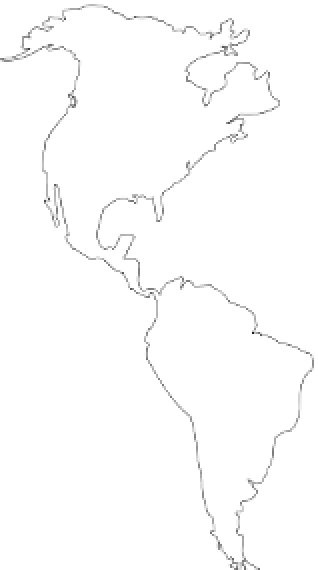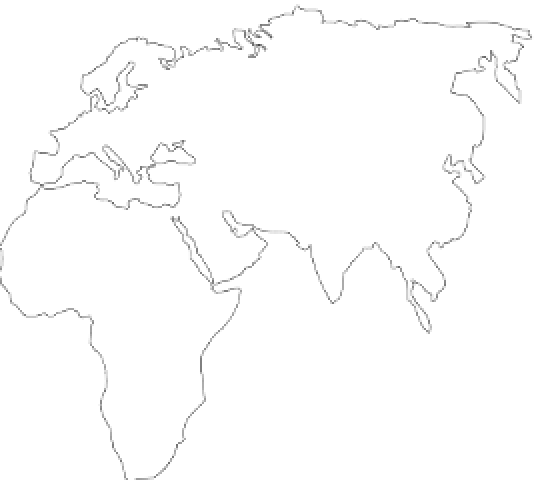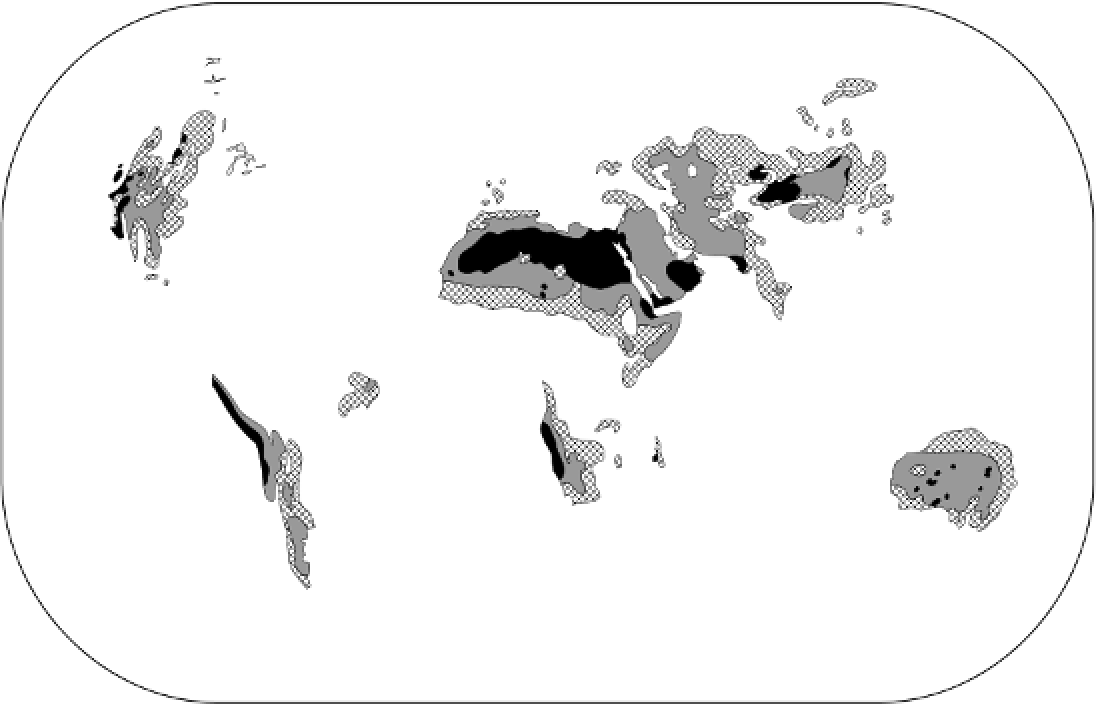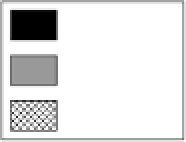Geology Reference
In-Depth Information
AEOLIAN ENVIRONMENTS
Deserts
are regions with very low annual rainfall (less
than 300 mm), meagre vegetation, extensive areas of
bare and rocky mountains and plateaux, and alluvial
plains that cover about a third of the Earth's land surface
(Figure 12.1). Many deserts are hot or tropical, but some
polar regions, including Antarctica, are deserts because
they are dry. Aridity forms the basis of classifications of
deserts. Most classifications use some combination of the
number of rainy days, the total annual rainfall, tem-
perature, humidity, and other factors. In 1953, Peveril
Meigs divided desert regions on Earth into three cat-
egories according to the amount of precipitation they
receive:
Wind is a geomorphic agent in all terrestrial environ-
ments. It is a potent agent only in dry areas with
fine-grained soils and sediments and little or no vege-
tation. The extensive sand seas and grooved bedrock in
the world's arid regions attest to the potency of aeolian
processes. More local wind action is seen along sandy
coasts and over bare fields, and in alluvial plains contain-
ing migrating channels, especially in areas marginal to
glaciers and ice sheets. In all other environments, wind
activity is limited by a protective cover of vegetation and
moist soil, which helps to bind soil particles together and
prevent their being winnowed out and carried by the
wind, and only in spaces between bushes and on such
fast-drying surfaces as beaches can the wind free large
quantities of sand.
1
extremely arid lands have at least 12 consecutive
months without rainfall;
2
arid lands have less than 250 mm of annual rainfall;
Hyper-arid
Arid
Semi-arid
Figure 12.1
The world's deserts.
Source:
Adapted from Thomas (1989)



























































































































